Zimbabwe Travel Guide
Zimbabwe Travel Guide
Zimbabwe is a unique and exciting safari destination, popular with many safari "regulars". Often overlooked because of the political turmoil of the last decade, Zimbabwe is now making a comeback as one of the premier African safari destinations offering good value, uncrowded safaris and beautiful, remote wildlife experiences.
Highlights
- Vast, remote wildlife regions and national parks
- Uncrowded and unspoilt
- Very friendly people
- Great variety of destinations
- Excellent photographic opportunities
- Some of the best game viewing in Africa
- Safe to visit
- Good value-for-money
By far the most popular tourist region in Zimbabwe is Victoria Falls, in the far north-western corner of the country.
Magnificent Victoria Falls
The mighty Victoria Falls, known locally as Mosi-oa-Tunya (or "the smoke that thunders") is a spectacular curtain waterfall on the Zambezi River, which separates Zimbabwe from its northern neighbour, Zambia. The falls can also be visited from the Zambian side, but the view from the Zimbabwean side is generally better. Victoria Falls is known as the adventure capital of Africa and is often combined with a safari itinerary in Zimbabwe, Zambia, Botswana or even South Africa. Some of the adrenalin-inducing activities include whitewater rafting, bridge jumping, bungee jumping, flying fox, helicopter and microlight flights, while the more gentle pursuits include sunset river cruises, fishing trips and cultural village tours.
Zimbabwean Safari Route
Zimbabwe's most famous safari circuit is called the "Milk Run", a triangular route combining Victoria Falls, Hwange National Park and Bumi Hills or Lake Kariba. The western and northern parts of the country are the best-known safari destinations because of their relative proximity to Victoria Falls, making them more accessible than some of the more remote parks such as Gonarezhou in the far south-eastern corner of the country.
Hwange National Park
The largest and most popular park in Zimbabwe, Hwange National Park is a Big 5 safari destination, known for its huge herds of elephants and buffalo which congregate at the waterholes in the dry season. At 14,600 km², it offers a variety of scenery, game (over 100 mammal species) and vegetation which ranges from the semi-desert scrub in the south to forests, granite hills and mopane woodlands to the north. Hwange is one of the easiest game reserves to get to and its safari lodges offer day and night game drives and often, walking safaris.
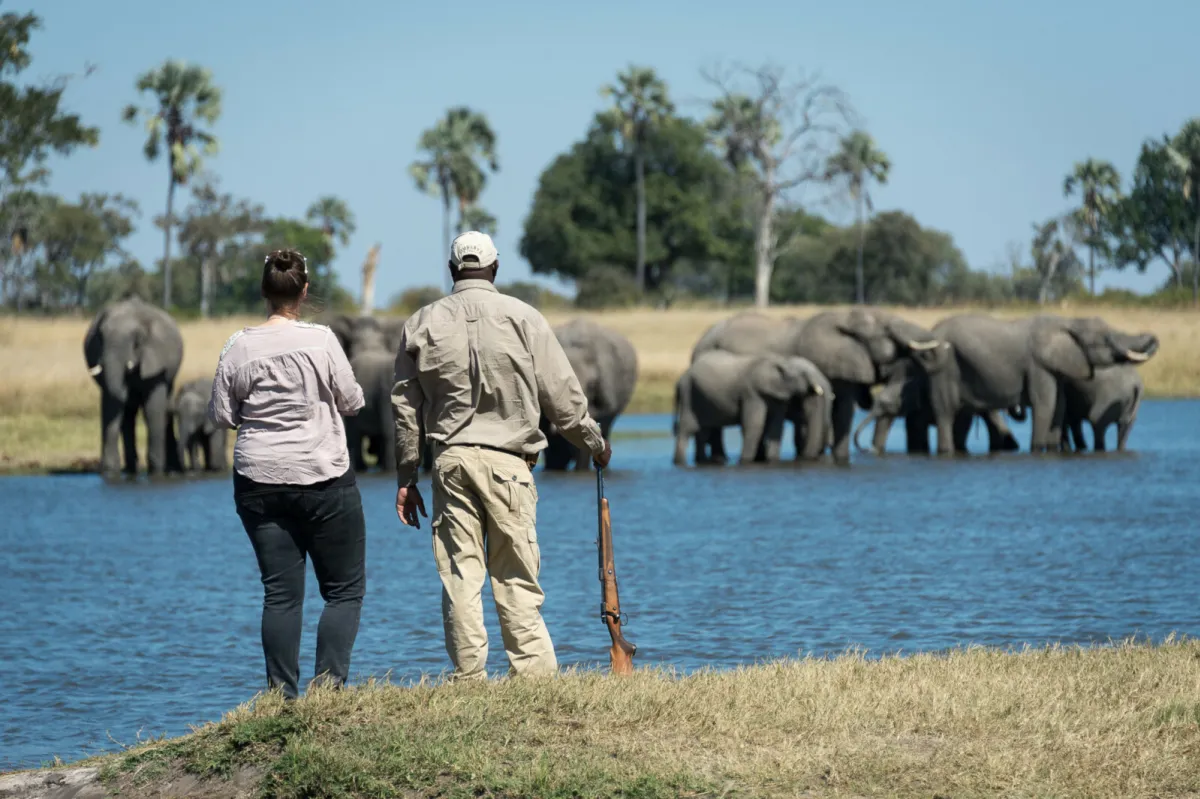
Guided walking safari in Hwange
Gonarezhou National Park
The next biggest national park to Hwange, Gonarezhou National Park is remote and, therefore, the least developed and most untouched. It borders Mozambique's Limpopo National Park and South Africa's Kruger National Park to make up the vast Great Limpopo Transfrontier Park wilderness area. It is a Big 5 destination but the wildlife can be skittish and shy as they're not used to humans. However, birding is excellent. You're likely to see large elephant herds, and the less common antelopes like nyala, roan and sable, and even some wild dogs.
Mana Pools National Park
Over the millennia, the mighty Zambezi River has carved for itself a series of valleys, islands, channels, sandbanks and ox-bow lakes. Thanks to the mineral-rich ancient volcanic soils, the vegetation is lush and plentiful, making Mana Pools a wildlife haven - and a wealth of big game is attracted to its floodplains. The area is perfect for both canoe safaris and hiking safaris. At Mana, you're likely to encounter big cats, large herds of buffalo and elephants and resident packs of wild dogs as well as the large antelope like kudu, eland and waterbuck. The rivers are alive with crocodiles and hippos. Birding is superb, especially in the dry season when the migrant birds return.
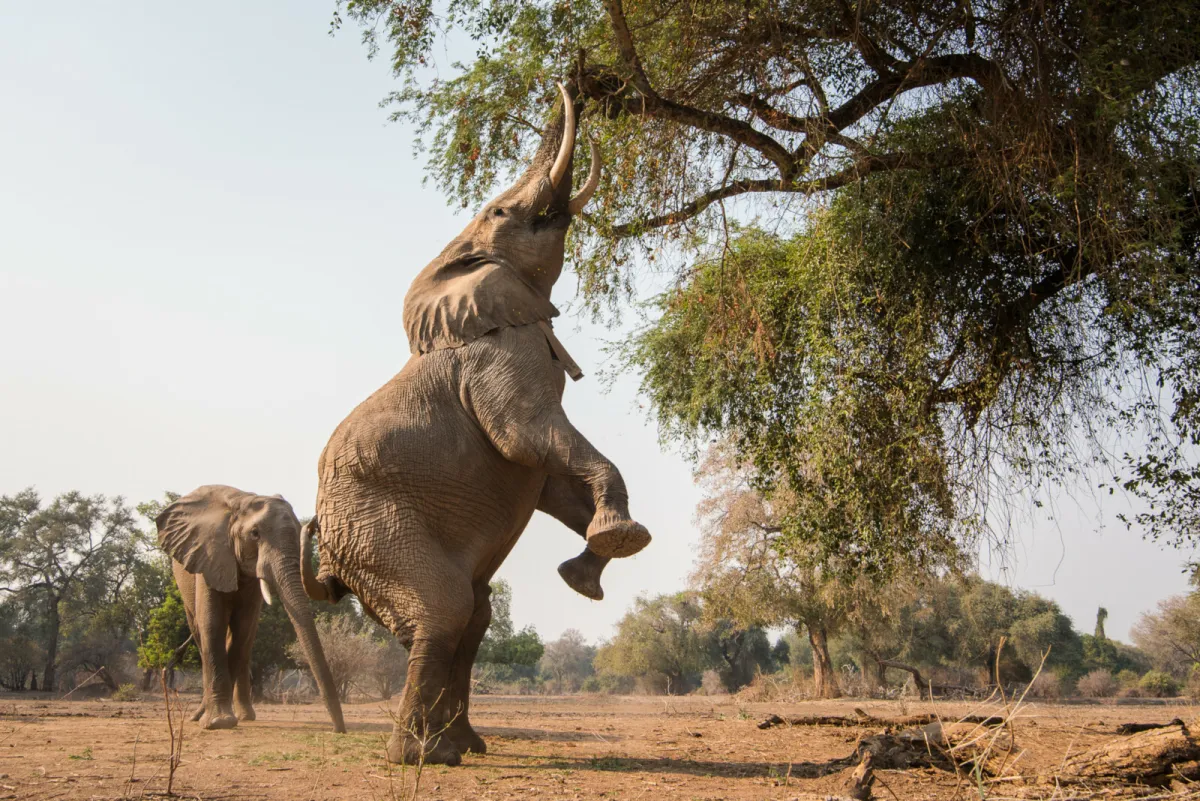
Mana Pool elephant
Matobo Hills National Park
Easily accessible - a thirty-minute drive from Bulawayo, Matobo Hills offers dramatic scenery with its imposing granite boulders, seemingly thrown down at odd angles by angry giants in prehistoric times. It's an area steeped in ancient history and folklore. Superb examples of bushmen rock art can be seen, it's a sacred site of the proud Ndebele people and it's where you'll find the grave of Cecil Rhodes, carved into a high rock outlook at 'World's View'. You may see white rhino, leopard (supposedly Africa's most prolific concentration of leopard) and black eagles. Unfortunately, no lions or elephants remain in this reserve.
Matusadona National Park
When the Kariba Dam was built in the late 1950s, much of the Zambezi Valley was flooded, resulting in Lake Kariba; one of the world's largest man-made lakes. Matusadona National Park was established on its southern shores to cater for the wildlife displaced in the process. Today, there are many excellent safari lodges and houseboats on its shores, offering game drives, bush walks and boat and canoe safaris to explore its vast expanse. Matusadona is a Big 5 national park. It has the largest concentration of lions as well as white and black rhino and many of the larger antelope. The birdlife is prolific and the African fish eagle is a common resident.
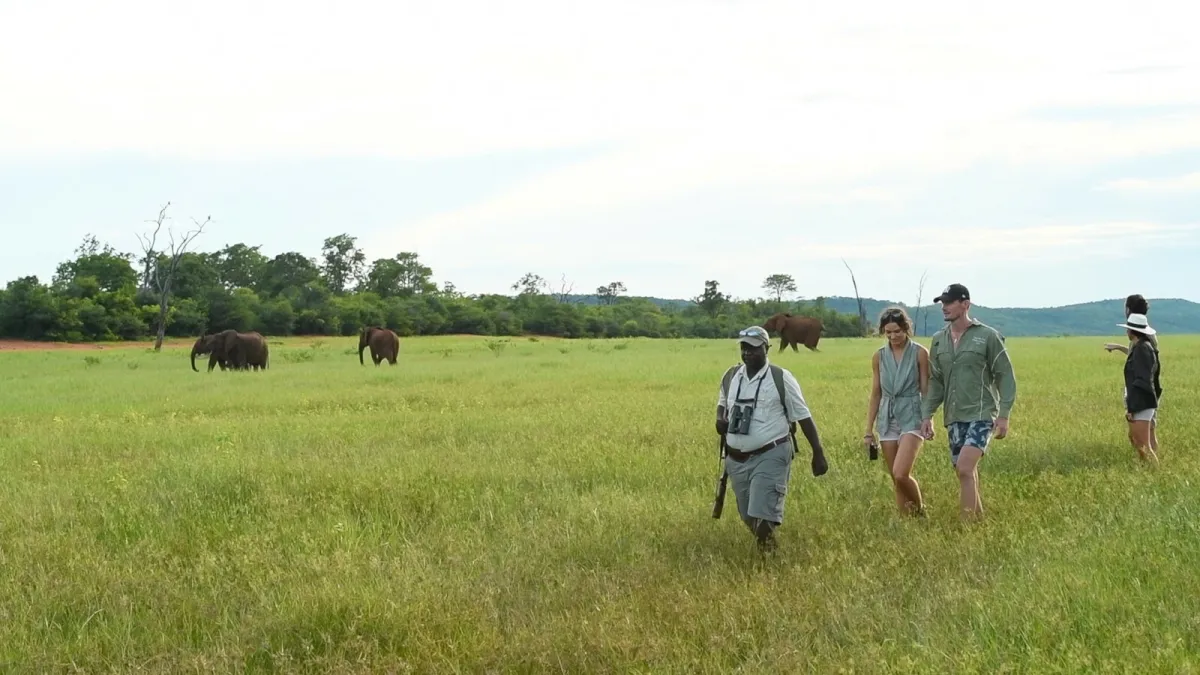
Guided walk, Matusadona National Park
Climate and when to visit
Zimbabwe has a warm, subtropical climate with hot summers and mild winters. The rainy season is in the summer, from November to April, and some lodges are closed during this time. Halfway through the rainy season, the water level of the Zambezi River starts to rise, so that its peak flow is from March to June. This affects destinations like Victoria Falls, Lake Kariba and to some extent even Mana Pools National Park. October is the hottest month of the year, and the dry season is from May to October. The peak of the dry season, from July to October, is the most popular time to be on safari and the best time to visit Zimbabwe. During this time, the days can be nice and warm but the nights can be cold. Please take a look at our detailed travel calendar showing the best time to visit Victoria Falls.
Safety in Zimbabwe
Zimbabweans are peace-loving and friendly people, and they receive visitors with warmth and enthusiasm. Even at the height of the political turmoil and economic instability (around 2008), tourist regions like Victoria Falls were safe to visit and largely unaffected by politics. By and large, the country's tourist regions and national parks remain peaceful, safe and unaffected by the political challenges the country has faced. Tourist numbers are on the rise again, and once-struggling lodges and businesses are starting to flourish. We have no hesitation in recommending Zimbabwe as a safari destination.
Currency
Zimbabwe has endured a period of hyperinflation that has decimated its economy and local currency, the Zimbabwean dollar. So much so, that the entire country now uses the US Dollar. This has brought economic stability and the country is once again on a growth path. As a tourist, it is advisable to bring USD in cash in small denominations (many places don't have change to offer), so make sure you have plenty of $1 and $5 bills. For higher denominations, ensure that you bring notes from 2004 and later, as some merchants are hesitant to accept older dollar bills. Most of the bigger hotels and lodges now also accept credit card payments (Visa and MasterCard).
What to see and do
Zimbabwe has many beautiful national parks and wildlife reserves and offers some of the best game viewing in Africa. Many of Africa's legendary safari guides hail from Zimbabwe and, in general, the standard of professional guiding in Zimbabwe is higher than most other countries in Africa. Game viewing does not always have to be done by vehicle. Guided walking safaris are popular in certain areas (Mana Pools and Matusadona National Parks are some of the best destinations for walking safaris). In addition, there are many activities on offer. In an area like Victoria Falls, there is so much to see and do that you can easily spend four or five days there, especially if you enjoy a bit of adventure.
Zimbabwe
Zimbabwe is one of the most beautiful in Africa. In spite of its political and economical troubles, it remains safe and absolutely worth visiting this jewel of South Africa.
Hwange National Park

Hwange National Park is Zimbabwe's largest and most popular game reserve; arguably the best safari destination in Zimbabwe. There is a wide variety of habitats and vegetation types, including dry Kalahari-type bushveld, mopane shrubland, acacia savanna, huge open grasslands, vast wetlands and teak forests. This diversity attracts a variety of wildlife, making Hwange an excellent choice for an African safari. It's also close to Victoria Falls and the two destinations can easily be combined in one safari itinerary.
Victoria Falls

Victoria Falls is the most spectacular sight anywhere in Africa. One of the Seven Natural Wonders of the World, this huge curtain waterfall lies on the border between Zimbabwe and Zambia, where the mighty Zambezi River plunges 108 metres down into a narrow gorge, creating a waterfall that is a mile wide. A visit to Southern Africa is not complete without a trip to Victoria Falls. The falls can be visited from the Zambian or from the Zimbabwean side. The town on the Zambian side is called Livingstone, and the town on the Zimbabwean side is also called Victoria Falls. Both locations are safe, popular tourist destinations with good infrastructure and a variety of accommodation options.
Lake Kariba

Straddling a portion of the border between Zambia and Zimbabwe, Lake Kariba is the world's largest man-made lake. Its creation provided perfect conditions for wildlife in Matusadona National Park, located on a section of its shore on the Zimbabwean side, to thrive. Game viewing along Lake Kariba's shoreline can be done by houseboat, canoe or boat, and from inside Matusadona on foot; preferably with an expert guide. The roads are rough and gruelling and 4x4 vehicles are required.
Gonarezhou National Park
Gonarezhou is one of Zimbabwe's remote, hidden gems. A beautiful national park with dramatic landscapes and abundant wildlife.
Mana Pools National Park

Mana Pools in northern Zimbabwe is one of the few wilderness areas where it's possible to explore on foot (either guided or on your own) or by canoe. Roads are few and far between so game driving is by 4x4. It's a pristine, unspoilt paradise, with abundant game, spectacular scenery and an incredible variety of birds.
You may also want to look at
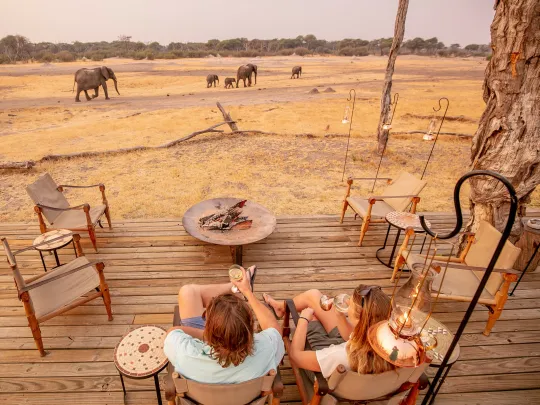
10 Day Zimbabwe Adventure Safari
Our 10 Day Zimbabwe Adventure Safari explores three of Zimbabwe's top game viewing destinations - on foot, by safari vehicle and on water. From wildlife-rich Hwange National Park and Matusadona National Park on the shores of Lake Kariba to unspoilt Mana Pools, this authentic safari is big on adventure and game viewing.
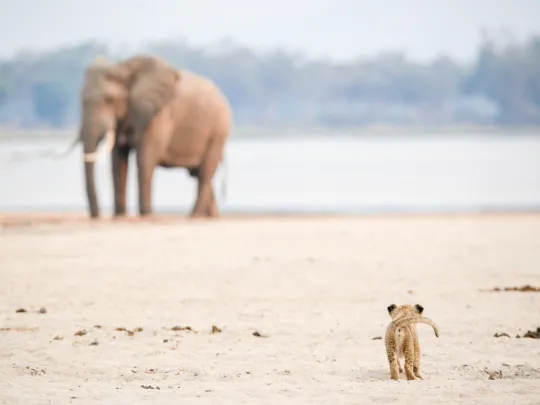
9 Day Best of Zimbabwe Safari
This 9-Day Best of Zimbabwe Safari includes three of the most popular destinations in Zimbabwe: Victoria Falls, a 7th Wonder of the Natural World and renowned adventure capital; Hwange National Park, the jewel of Zimbabwe and its largest national park, home to large herds of elephants and healthy wild dog populations; and Mana Pools, World Heritage Site and pristine wilderness. Explore Mana on foot and by boat along its myriad waterways teeming with wildlife.
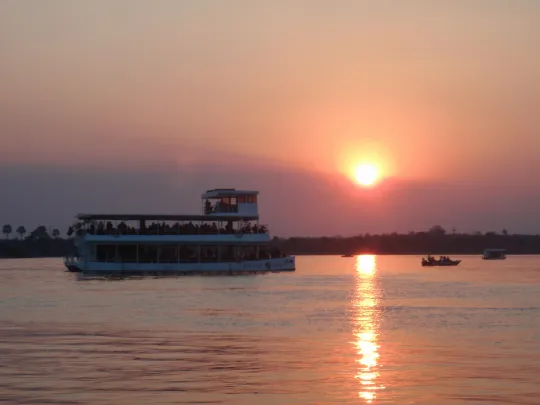
6 Day Victoria Falls and Chobe Safari
The majestic Victoria Falls on the Zimbabwean/Zambian border is within easy reach of the famous Chobe National Park in Botswana, making it easy to combine these two terrific destinations on one unforgettable safari itinerary. This trip idea combines three nights at Victoria Falls with two nights on safari at the Chobe National Park, enjoying both land- and water-based game viewing.



















